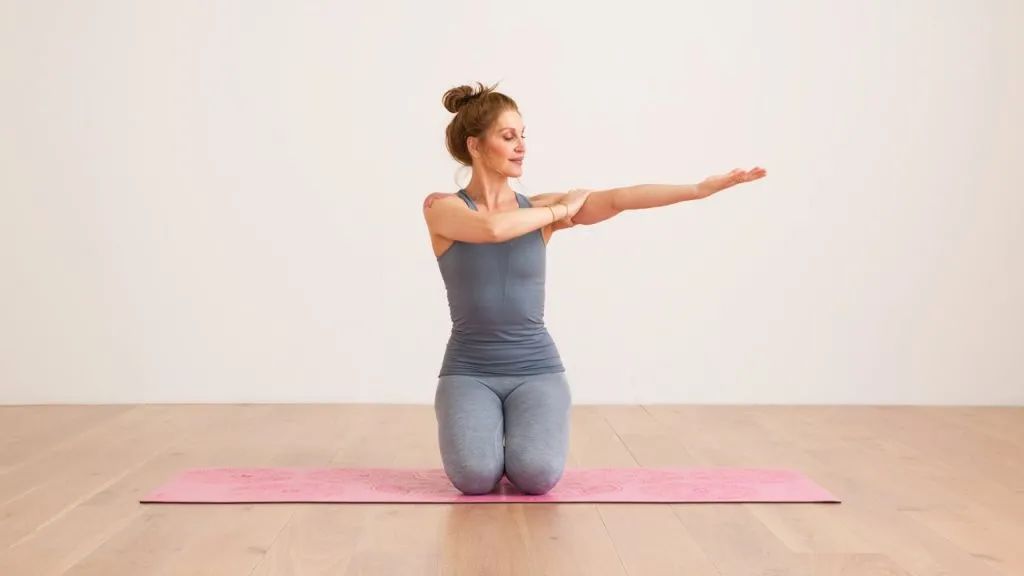Downward dog pose is one of the earliest yoga postures we learned when practicing yoga.

It is great at increasing overall strength and mobility, and neutralizes the spine between strong twisting, forward bending or backward bending.

Once you have mastered the downward dog pose, it is a good rest position.

However, in downward dog pose, we usually turn our shoulders and upper arms inward.

This can strain the shoulders and neck, creating tension and making the posture more difficult.

In order to make the arm comfortable and stable, two opposite movements need to be performed on the arm.

You may have heard the teacher’s instruction, “rotate the upper arm from the outside and rotate the lower arm from the inside”, but this may confuse you! So today, share some simple ways to learn arm and shoulder movements.

This will make your downward dog pose easier.
4 steps to make downward dog pose more comfortable step 1 open your arms to both sides and sit on your heels.
Rotate the palm upward so that the upper arm and shoulder roll back (the thumb will point behind you).
Let your shoulder blades pull back and keep the bottom of your neck relaxed.
You may have begun to feel more space and have felt relaxed on your neck and shoulders.
Step 2 then hold the upper arm and shoulder blades in place (roll back / rotate outward) and rotate the wrist so that the palm is now facing the ground.
The third step is to maintain this alignment and rotation and put your arm in front.
Keep the arm bones plugged back into the socket to stabilize the shoulders.
Step 4 put your hand on the ground in front of your fingers.
Press firmly on the root of the first finger and thumb, especially the fingertip.
When you press your toes down and straighten your legs into position, your upper arms remain rotated outward rather than inward, and your shoulders feel wide.
This will eliminate tension and you will feel relaxed and spacious on your shoulders.
If you feel your shoulders tight, you can move your shoulders forward slightly rather than towards your thighs.
Keep your shoulder blades spread out and stay here.
Align your neck with your spine and allow energy to flow freely.
Detailed explanation of posture kneel on the floor, move the center of gravity forward and hold the floor with hands.
Lift up your feet, lower your body, lean your abdomen against your thighs, extend your arms forward, fully open your fingers and press them against the floor.
Inhale, force your legs, step on the floor and raise your hips up.
Exhale, keep your heels down, keep your feet as wide as your hips, fully open your ten toes and fingers and press them against the floor, and move your weight over your feet (if you feel a strong stretch on the back of your thighs, take a step forward and bend your knees slightly).
The shoulders are extended and the shoulder blades are abducted and tightened towards the hips at the same time.
The neck is relaxed, the head droops naturally, the arms are tightened and rotated inward, the outer side of the palm is pressed down, and the elbows and eyes are relative to each other to prevent joint hyperextension.
Remember that in downward dog pose, you can bend your knees slightly, which will extend your spine and make your lower back and hamstrings more comfortable…

